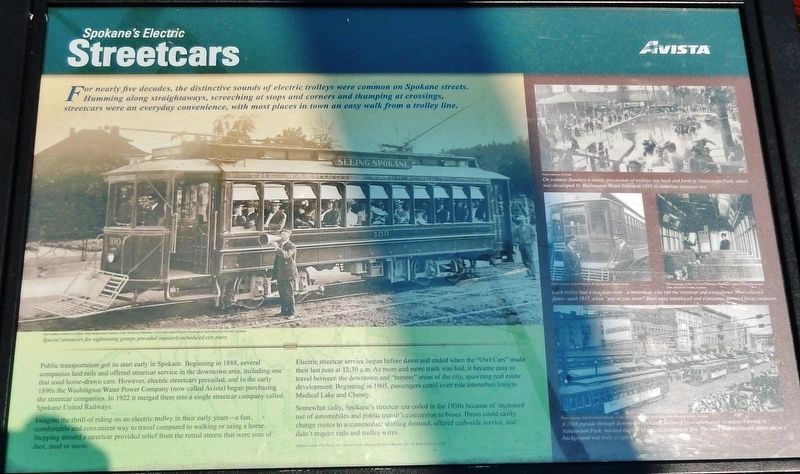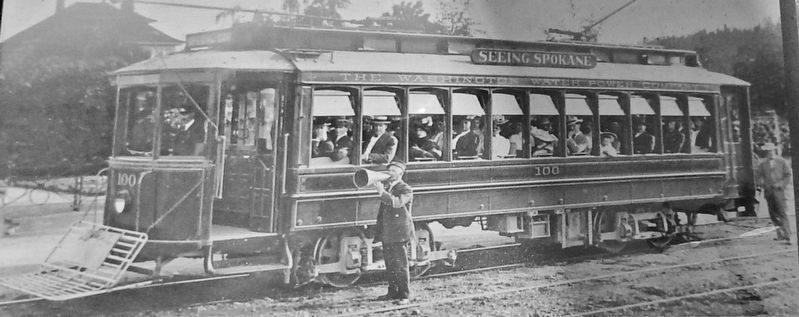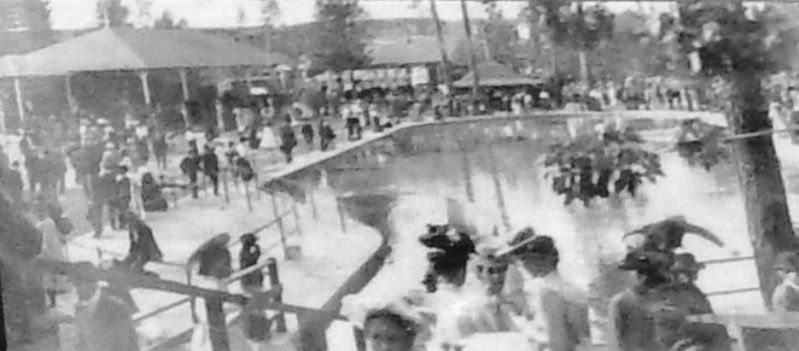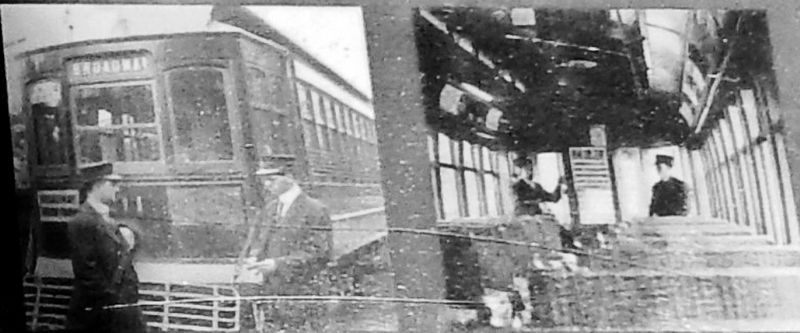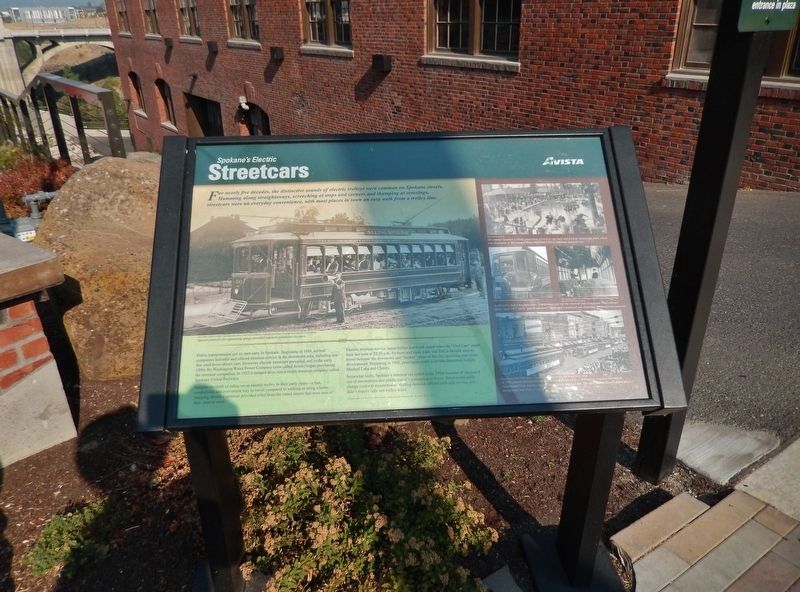Spokane in Spokane County, Washington — The American West (Northwest)
Spokane's Electric Streetcars
For nearly five decades, the distinctive sounds of electric trolleys were common on Spokane streets. Humming along straightaways, screeching at stops and corners and thumping at crossings, streetcars were an everyday convenience, with most places in town an easy walk from a trolley line.
Public transportation got its start early in Spokane. Beginning in 1888, several companies laid rails and offered streetcar service in the downtown area, including one that used horse-drawn cars. However, electric streetcars prevailed, and in the early 1890s, the Washington Power Company (now called Avista) began purchasing the streetcar companies. In 1922 it merged them into a single streetcar company called Spokane United Railways.
Imagine the thrill of riding on an electric trolley in their early years — a fast, comfortable and convenient way to travel compared to walking or using a horse. Stepping aboard a streetcar provided relief from the rutted streets that were seas of dust, mud or snow.
Electric streetcar service began before dawn and ended when the "Owl Cars" made their last runs at 12:30 a.m. As more and more track was laid, it became easy to travel between the downtown and “remote” areas of the city, spawning real estate development. Beginning in 1905, passengers could even ride interurban lines to Medical Lake and Cheney.
Somewhat sadly, Spokane's streetcar era ended in the 1930s because of increased use of automobiles and public transit's conversion to buses. Buses could easily change routes to accommodate shifting demand, offered curb-side service, and didn't require rails and trolley wires.
Erected by Avista.
Topics. This historical marker is listed in these topic lists: Industry & Commerce • Railroads & Streetcars. A significant historical year for this entry is 1888.
Location. 47° 39.657′ N, 117° 25.423′ W. Marker is in Spokane, Washington, in Spokane County. Marker is on North Post Street north of West Spokane Falls Boulevard, on the left when traveling north. Marker is located beside the sidewalk at the northeast corner of the Spokane Tribal Gathering Place plaza. Touch for map. Marker is at or near this postal address: 353 North Post Street, Spokane WA 99201, United States of America. Touch for directions.
Other nearby markers. At least 8 other markers are within walking distance of this marker. Post Street Substation (here, next to this marker); City Hall (within shouting distance of this marker); Spokane River (about 500 feet away, measured in a direct line); The First Bridges (about 600 feet away); Post Street Bridge (about 600 feet away); Symbol of Spokane (about 600
feet away); Havermale Island — Pioneer Stronghold (about 600 feet away); The Great Fire of 1889 (about 700 feet away). Touch for a list and map of all markers in Spokane.
Also see . . . Spokane's Streetcars. Spokane's first streetcar line was the Spokane Street Railway Co., built specifically to sell lots in Browne's Addition, a new development of houses and mansions on the city's western edge. The Spokane Street Railway was an immediate hit. It paid for itself within eight months, at a nickel a fare. Two companies, the Spokane & Montrose Motor Railroad Co. and the Arlington Heights Motor Railway Co., used steam streetcars, pulled by small steam locomotives. The Ross Park Street Railway Company was the first to adopt the technology that would soon rule in Spokane: electricity. The electric trolley car had been perfected in 1888 and was just beginning to sweep the country. (Submitted on April 23, 2020, by Cosmos Mariner of Cape Canaveral, Florida.)
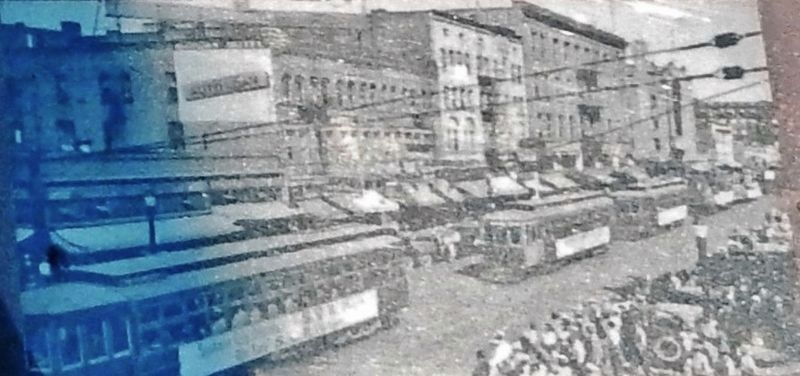
Courtesy Northwest Museum of Arts & Culture
5. Marker detail: 1936 Parade
A 1936 parade through downtown Spokane followed by a ceremonial streetcar burning in Natatorium Park marked the end of the city’s streetcar era. The Auto Sale billboard in this photo’s background was truly a sign of the changing times.
Credits. This page was last revised on April 23, 2020. It was originally submitted on April 22, 2020, by Cosmos Mariner of Cape Canaveral, Florida. This page has been viewed 364 times since then and 28 times this year. Photos: 1, 2, 3, 4, 5, 6. submitted on April 22, 2020, by Cosmos Mariner of Cape Canaveral, Florida.
